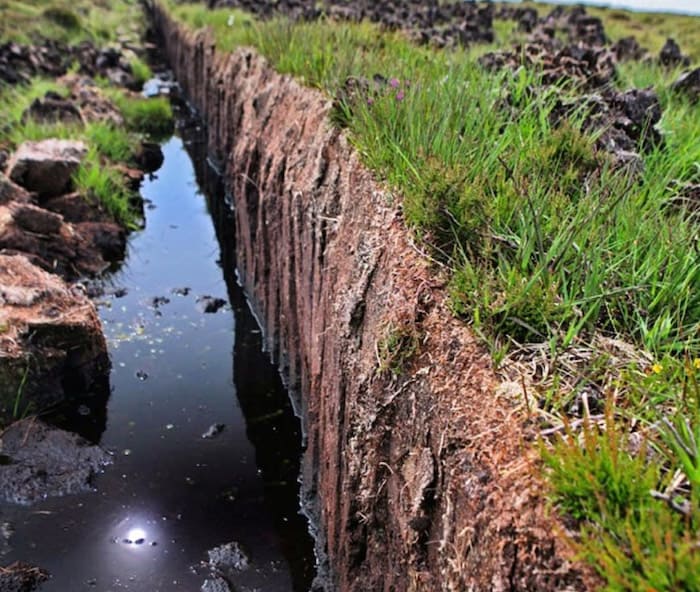Crack open a bottle of Laphroaig, Argbeg or Lagavulin, and you’ll smell it immediately: that special combination of rubber, band-aids, wet campfire, smoked fish, and burning tires that makes scotch lovers salivate and weaker drinkers run for the hills. Peat.
Thousands of years in the making, peat is one of the most unique substances on the planet. Just like your compost heap, it’s made from decaying organic matter. Unlike compost, however, its components never fully decompose because of the anaerobic or acidic conditions found in wetlands or bogs. That means it retains a lot more fiber and organic matter than compost, which is why it makes a good fuel when dried – and why it has a distinctive “reek,” or aroma, when burned.

The main plant material in different regional peats gives them distinctive reeks, an attribute wonderfully exploited by Scottish distillers. Heathery peat from Orkney Island, for example, gives Highland Park that famous sweet note, while Laphroaig’s mossy, lichen-rich peat imparts a medicinal tang.
Peat is found all over the world, but the biggest deposits are in Russia, Northern Europe, Canada, the Northern United States, Patagonia, and Indonesia. The substance serves a lot of important environmental functions, including acting as a major global carbon sink. It not only traps the carbon contained in organic matter, but also supports a rich ecosystem of bogland plants. It is also extremely absorbent, protecting wetlands by helping them retain moisture longer and grow faster. That’s important for us, too. Deposits cover just 3% of the world’s surface, but hold 10% of global freshwater resources.
Unfortunately, it also takes a very long time to form – thousands of years, in fact. And we’re using it faster than it can replenish. Is that something we need to worry about as Scotch drinkers? Probably not. Whisky production uses a tiny, tiny fraction of the world’s supply. In an interview with Slate, Jean-Yves Daigle, former chair of the Canadian National Committee of the International Peat Society, said that if peat were only used to produce whisky, we would never run out. We’ll drink to that.



